In the vast expanse of the open skies, one creature reigns supreme with its elegant flight and keen predatory instincts: the Black Kite (Milvus migrans).
With its striking black plumage contrasting against its deeply forked tail, the Black Kite commands attention as it soars effortlessly through the air.
This majestic bird of prey, found worldwide, holds a significant place in folklore and ecological studies.
The Black Kite embodies Avian grace and efficiency, from its nesting habits to its hunting techniques. Known for its opportunistic feeding behaviors, this raptor is equally adept at scavenging for carrion and capturing live prey.
Its sharp eyesight and agile aerial maneuvers make it a formidable hunter, capable of snatching prey mid-flight with unparalleled precision. Join us on a journey into the fascinating world of the Black Kite. Let’s admire its role in ecology.
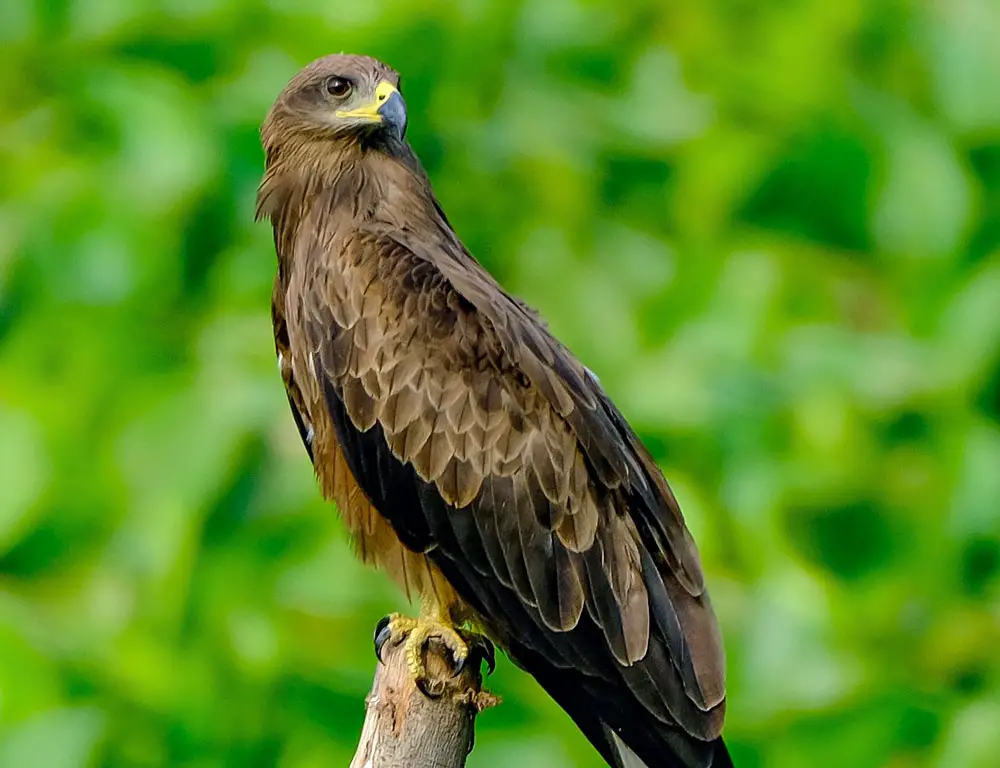
Characteristics of the Black Kite
The Black Kite is a medium-sized bird of prey known for its distinctive appearance and impressive aerial capabilities. Let’s delve into its key physical characteristics:
Plumage
As its name suggests, the Black Kite exhibits predominantly dark plumage, with glossy black feathers covering most of its body.
However, there are variations in plumage coloration among different subspecies and age groups. Juvenile Black Kites typically have lighter plumage with brown streaks, gradually darkening as they mature.
Size and Shape
Black Kites have a wingspan ranging from 145 to 165 cm (57 to 65 inches) and a body length of approximately 50 to 60 cm (20 to 24 inches).
They possess a streamlined body with long, narrow wings and a deeply forked tail, which aids in maneuverability during flight.
This aerodynamic design allows them to soar effortlessly for extended periods, utilizing thermal updrafts to gain altitude with minimal energy expenditure.
Facial Features
The Black Kite’s face is characterized by a hooked bill, sharp and curved for tearing into prey, and a distinctive pale yellow cere at the base of the bill.
Its eyes are large and amber-colored, providing excellent visual acuity for detecting prey from high altitudes.
Surrounding the eyes are patches of bare skin, typically yellow or orange, adding to the bird’s striking appearance.
Legs and Feet
Black Kites have potent legs equipped with sharp nails, ideal for capturing and grasping prey. Their feet are adapted for perching and grasping branches, with three forward-facing toes and one backward-facing toe (known as a zygodactyl arrangement).
This foot structure enables them to maintain a secure grip on branches and prey items in flight or perched.
Flight
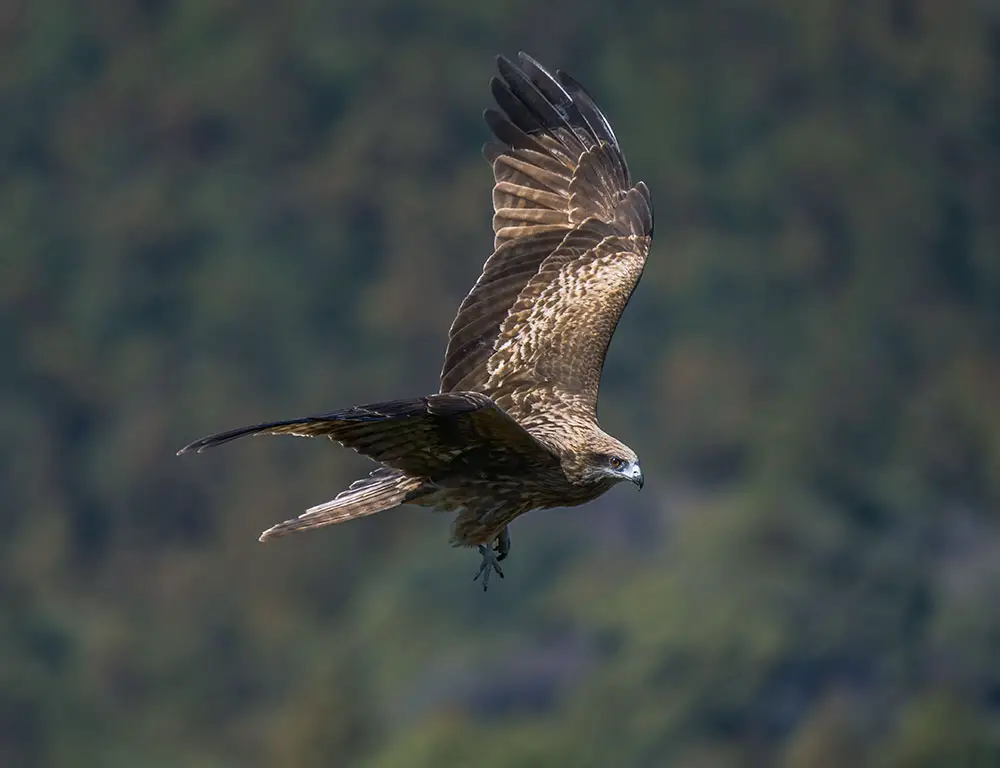
One of the most remarkable features of the Black Kite is its soaring flight, characterized by graceful glides and occasional bursts of rapid wingbeats.
They are skilled aerial hunters, capable of maneuvering with precision to intercept prey in mid-air or dive steeply to capture prey on the ground.
Their long, broad wings and forked tails provide exceptional agility and control, allowing them to navigate complex aerial environments easily.
Vocalizations
Black Kites are not particularly vocal birds, but they produce various calls for communication and territorial defense. Their vocalizations include high-pitched whistles, shrill screams, and repetitive mewing sounds.
These calls vary in intensity and frequency depending on the bird’s age, sex, and context, serving to establish territory, attract mates, and coordinate hunting activities with other individuals.
Sexual Dimorphism
Male and female Black Kites exhibit minimal sexual dimorphism in size and plumage coloration, making it difficult to distinguish between the sexes based on appearance alone.
However, females may be slightly larger and heavier than males on average, with subtle differences in wing shape and tail length.
Geographic Variation
The Black Kite exhibits considerable geographic variation in plumage coloration, size, and behavior across its wide range.
Several recognized subspecies, each adapted to its specific habitat and environmental conditions.
These subspecies may exhibit differences in plumage patterns, wing length, and migratory behavior, reflecting the evolutionary diversity within the species.
A Deeper Look into the Life History of the Black Kite
The Black Kite belongs to the family Accipitridae and the genus Milvus. Let’s delve into its taxonomy:
| Taxonomy Level | Classification |
| Kingdom | Animalia |
| Phylum | Chordata |
| Class | Aves |
| Order | Accipitriformes |
| Family | Accipitridae |
| Genus | Milvus |
| Species | Milvus migrans |
Food Habitat
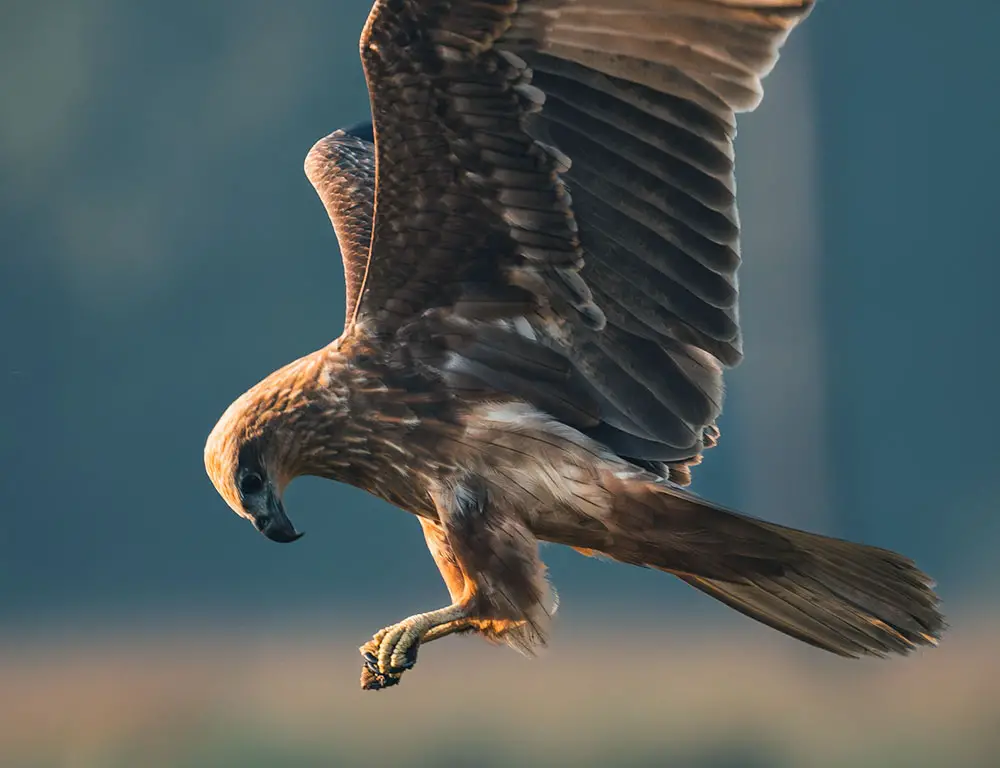
Black Kites are opportunistic predators with a diverse diet. They primarily feed on small mammals, birds, reptiles, insects, and carrions.
They are often seen scavenging near human settlements and garbage dumps, taking advantage of accessible food sources. Their adaptable foraging behavior allows them to exploit various habitats, including grasslands, forests, wetlands, and urban areas.
Nesting
Black Kites construct their nests in tall trees, cliffs, or man-made structures such as telephone poles and buildings. The nest is built with sticks, twigs, and other plant materials, lined with softer grass, leaves, and feathers.
Nests are typically large and bulky, providing a sturdy platform for incubating eggs and raising young.
| Nesting Habit | Description |
| Nest Location | Tall trees, cliffs, man-made structures |
| Nest Composition | Sticks, twigs, grass, leaves, feathers |
| Nest Size | Large and bulky |
| Nest Placement | High above ground, providing a clear view of surroundings |
Breeding
Black Kites are monogamous breeders, forming long-term pair bonds with their mates. Breeding season varies depending on geographical location, with pairs engaging in courtship displays and aerial acrobatics to strengthen their bond.
Females typically lay 2-4 eggs per clutch, which are incubated for around 30 days. Both parents participate in incubation and chick-rearing duties, with the female primarily responsible for brooding while the male provides food and defends the nest.
Migration
While some populations of Black Kites are sedentary, others undertake seasonal migrations to take advantage of favorable feeding and breeding conditions.
These migrations can span thousands of kilometers, with individuals traveling between breeding and wintering grounds in search of food and suitable nesting sites.
Range Map
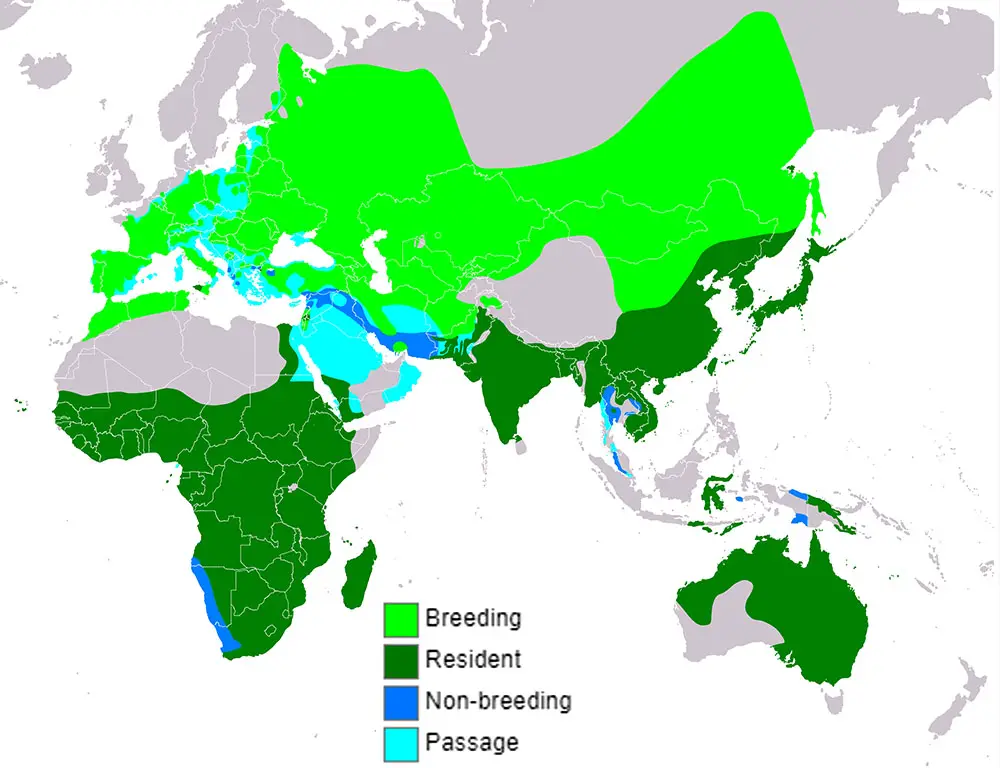
It is found throughout southern and central Europe, including Spain, France, Italy, Greece, and the Balkan Peninsula. Extends across Asia from the Middle East to eastern Russia, including India, China, Japan, and Southeast Asia.
Standard across sub-Saharan Africa, from Senegal and Mauritania in the west to Ethiopia and Somalia in the east and south to South Africa.
Conservation Status
The conservation status of the Black Kite varies depending on the region and subspecies. The species is listed as Least Concern by the International Union for Conservation of Nature (IUCN) due to its wide distribution and relatively stable population.
However, some areas have reported localized declines due to habitat loss, pollution, and persecution.
Common Diseases and Treatments of the Black Kite
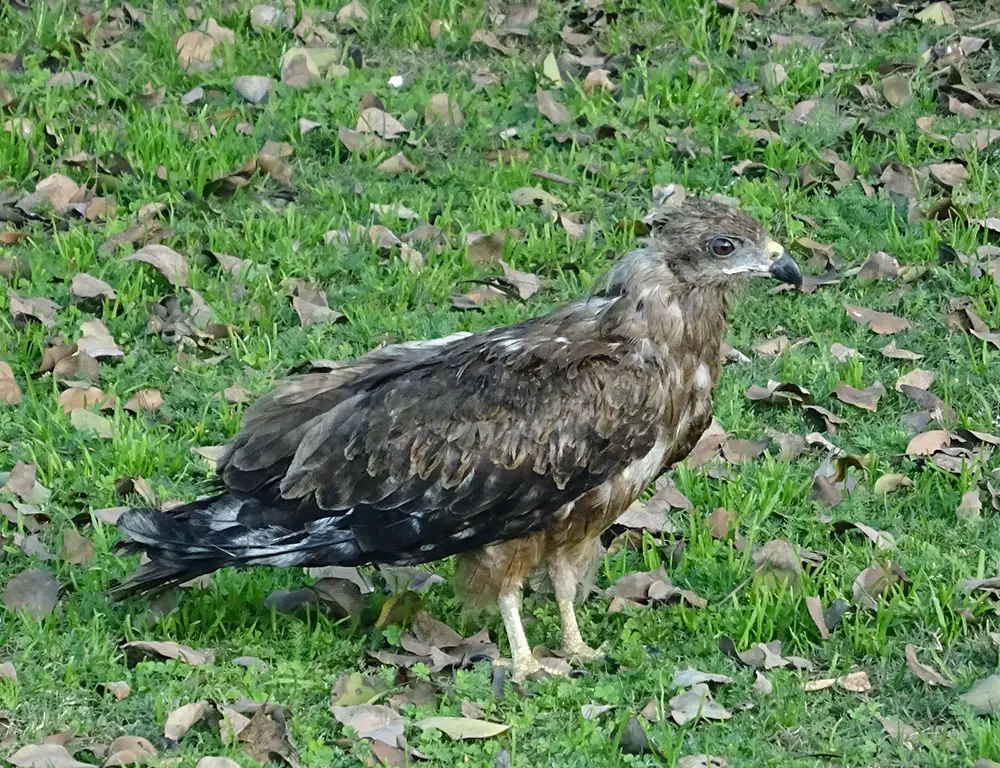
Common diseases affecting Black Kites can include both infectious and non-infectious conditions. Some of the most prevalent diseases and their treatments include:
Avian Pox
Avian pox is a viral disease characterized by wart-like growths on the skin, mucous membranes, and featherless areas of the body.
Treatment typically involves supportive care to boost the bird’s immune system and minimize secondary infections. In severe cases, surgical removal of the growths may be necessary.
Aspergillosis
Aspergillosis is a fungal infection caused by the fungus Aspergillus. It can affect the respiratory system, leading to respiratory distress and pneumonia.
Treatment involves antifungal medication, supportive care, and improving environmental conditions to reduce fungal spore exposure.
Traumatic Injuries
Black Kites are susceptible to injuries caused by collisions with vehicles, power lines, or other obstacles, as well as attacks by predators or territorial disputes.
Treatment may involve wound cleaning, pain management, and supportive care to facilitate healing. Severe injuries may require surgical intervention.
Lead Poisoning
Lead poisoning can occur in birds that ingest lead pellets or fragments from ammunition or fishing tackle. Symptoms include weakness, lethargy, and neurological abnormalities.
Treatment involves chelation therapy to remove lead from the body and supportive care to address symptoms.
Parasitic Infections
Black Kites can be affected by various internal and external parasites, including mites, ticks, fleas, and internal parasites such as roundworms and tapeworms.
Treatment typically involves antiparasitic medications administered orally, topically, or through injections.
Botulism
Botulism is a bacterial disease caused by the bacterium Clostridium botulinum, which produces toxins that affect the nervous system. Birds may become paralyzed and exhibit difficulty breathing.
Treatment involves supportive care, including fluid therapy and respiratory support, as well as administration of antitoxin if available.
Electrocution
Electrocution from power lines or electrical equipment is a significant cause of mortality in birds of prey, including Black Kites.
Treatment involves stabilizing the bird and addressing injuries like burns or fractures. Prevention efforts focus on retrofitting power lines with bird-safe measures to reduce the risk of electrocution.
5 Fun Facts About the Black Kite
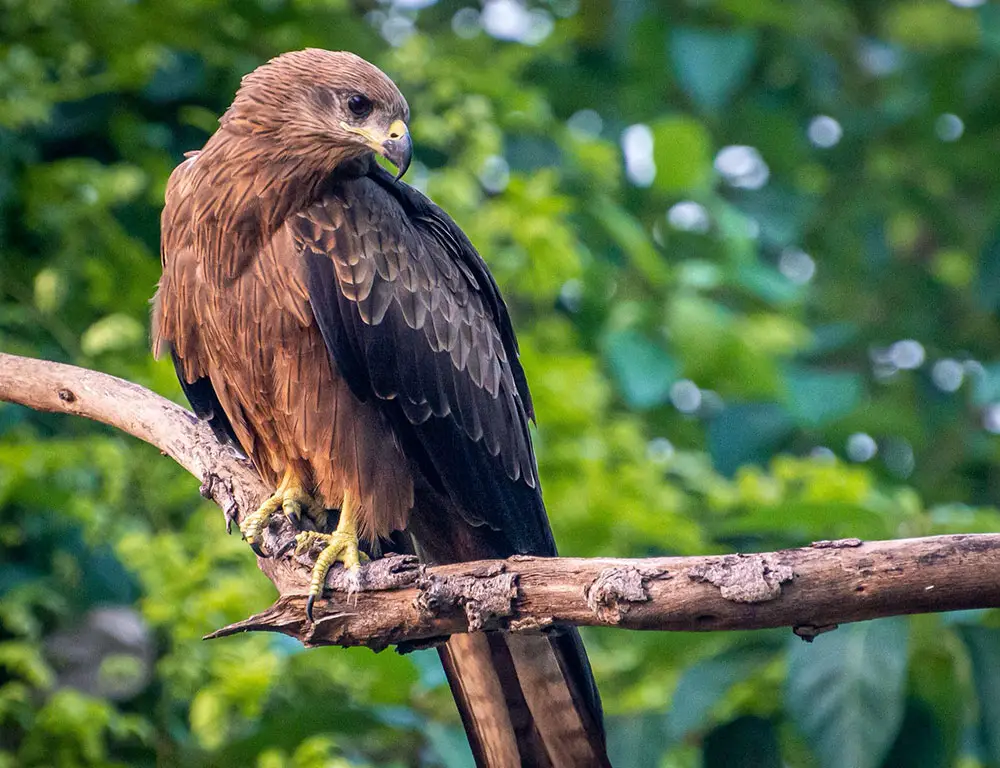
The Black Kite is a fascinating bird of prey with many intriguing characteristics. Here are five fun facts about this majestic species:
1. Social Behavior
Black Kites are often seen soaring and hunting in groups, particularly during migration or feeding on carrion.
They have been observed engaging in playful aerial acrobatics with other kites, demonstrating their friendly nature and strong social bonds within their communities.
2. Thermal Soaring
One of the Black Kite’s most impressive abilities is its mastery of thermal soaring. By riding thermal updrafts, these birds can gain altitude without flapping their wings, conserving energy during long-distance flights.
This efficient flying technique allows them to cover vast distances while searching for food or migrating between breeding and wintering grounds.
3. Scavenging Skills
Black Kites are highly adaptable and opportunistic feeders known for their scavenging behavior around human settlements and garbage dumps.
They can detect the scent of carrion from great distances. They will readily feed on carcasses of small animals or scraps of discarded food, making them valuable scavengers in urban and rural environments.
4. Global Distribution
The Black Kite has an extensive distribution, spanning much of Europe, Asia, Africa, and parts of Australia. It is common in diverse habitats, including grasslands, forests, wetlands, and urban areas.
This widespread distribution reflects the species’ ability to thrive in various environmental conditions and exploit various food sources.
5. Cultural Significance
Throughout history, Black Kites have held cultural significance in many societies. In some cultures, they are revered as symbols of strength, freedom, and wisdom, while in others, they are associated with superstitions or omens.
Their presence in folklore, mythology, and religious beliefs highlights the enduring fascination and reverence for these magnificent birds of prey.
FAQs
What is the diet of the Black Kite?
The Black Kite is an opportunistic predator with a varied diet. It primarily feeds on small mammals, birds, reptiles, insects, and carrions. They are also known to scavenge around human settlements for scraps of food.
Where do Black Kites nest?
Black Kites typically build their nests in tall trees, cliffs, or man-made structures such as telephone poles and buildings. They construct large nests using sticks, twigs, grass, and feathers, often positioned high above the ground for protection.
Do Black Kites migrate?
While some populations of Black Kites are sedentary, others undertake seasonal migrations in response to changing environmental conditions and food availability.
These migrations can cover thousands of kilometers, with individuals traveling between breeding and wintering grounds.
Are Black Kites endangered?
The Black Kite is not currently considered endangered. It is listed as Least Concern by the International Union for Conservation of Nature (IUCN) due to its wide distribution and relatively stable population.
However, some regions have observed localized declines due to habitat loss.
How do Black Kites hunt?
Black Kites are skilled aerial hunters, using their keen eyesight to detect prey from high altitudes. They often soar on thermal updrafts, scanning the ground below for potential prey.
Once a target is spotted, they may swoop down to capture it mid-air or dive steeply to snatch prey from the ground.
Conclusion
The Black Kite stands as a symbol of adaptability and resilience in the ever-changing landscapes of our planet.
From its mastery of the skies to its integral role in maintaining ecological balance, this magnificent bird exemplifies the beauty and complexity of the natural world.
Through centuries of observation and study, humans have gained valuable insights into the behavior, ecology, and conservation needs of the Black Kite.
However, despite its widespread distribution, the Black Kite faces numerous threats, including habitat loss, pollution, and persecution.
As stewards of the environment, it is our responsibility to ensure the continued survival of this iconic species and the ecosystems it inhabits.
By promoting habitat conservation, mitigating human-wildlife conflicts, and raising awareness about the importance of biodiversity, we can secure a brighter future for the Black Kite and all the magnificent creatures that share our planet’s skies. Let’s pledge to protect the Black Kite.